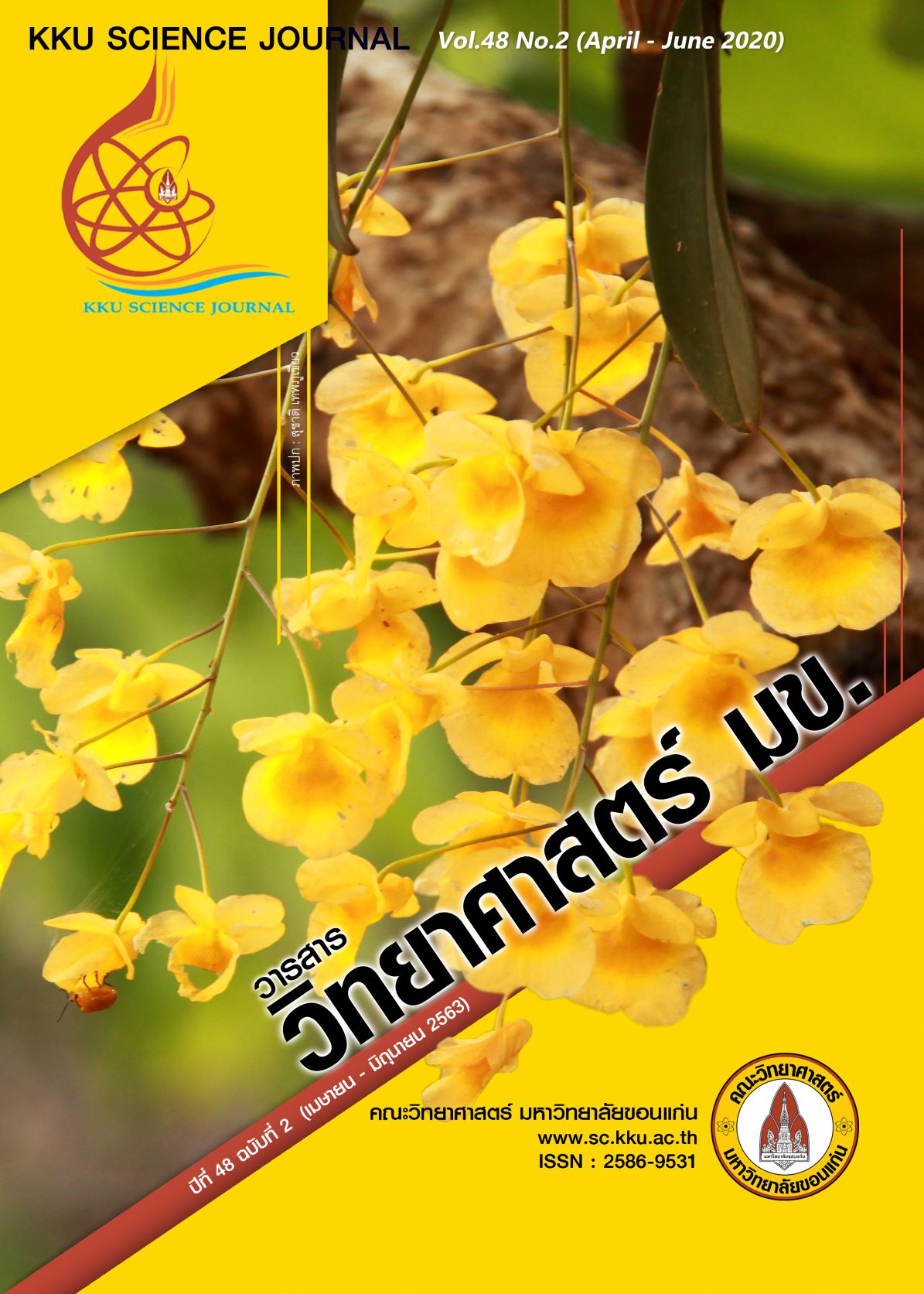Applications of Sesbania sesban (L.) Merr. Combined with Aeration for Treating Anaerobic Digester Effluent of Swine Farm
Main Article Content
Abstract
Nowadays, swine farming has been increased, resulting in wastewater discharged into natural waterbodies. Anaerobic digestion process is a conventional method that has been used for treating the wastewater. However, the effluent still has excess nutrients particularly nitrogen and phosphorus that need to be removed before drained. Using plants associated with aeration is an alternative option that may improve water quality. Sesbania sesban (L.) Merr. is a fast-growing species. It can grow in water saturated soil and can absorb nitrogen even at high concentrations (800 mg. L-1), makes this species interesting for use in water treatments. This study aims to evaluate the water treatment efficiency and responses of S. sesban to the anaerobic digester effluent of swine farms. The plants (30 days-old) sown from seeds were measured for their fresh weight, then placed in buckets containing 20 L wastewater. Treatments were divided into 4 treatments (5 replicates) which were i) non-aerated wastewater without plants (control); ii) aerated wastewater without plants; treatments which growing plants combined with iii) aerated and iv) non-aerated wastewater, respectively. Water quality (DO, BOD, TSS, TDS, EC, pH, NH4-N, NO3-N and PO4-P) was analysed every week after begin the experiment until week 6. Then, plant morphology was recorded, and relative growth rates were calculated. Chlorophyll contents and inorganic nitrogen in the plant tissues were analyzed from dry samples. From the study, it was found that aerated wastewater treatments both with and without plants can eliminate NH4-N in the wastewater within 2 weeks, whereas NO3-N concentrations increased. Compared with the treatments of non-aerated wastewater, NH4-N was removed within 3 weeks. DO concentrations increased 26%, 92% and 57% in the treatments of non-aerated wastewater with plants, and aerated wastewater with and without plant, respectively. Moreover, BOD concentrations reduced 34%, 66% and 56% and TSS concentrations reduced 86%, 91% and 90%, respectively in these treatments. Furthermore, the aeration also affects plants. In the aerated treatments, plants had number of leaves, nodule and NO3-N accumulation in the leaves were significantly higher than the plant growing in the non-aerated treatments. While the number of lateral roots, chlorophyll content, NH4-N accumulation in roots and NO3-N accumulation in the stems and roots of the plant growing in the non-aerated treatments were significantly higher than the plant growing in the aerated treatments. Therefore, S. sesban is an interesting species that can be used for treating wastewater from anaerobic digester effluent of livestock activities.
Article Details

This work is licensed under a Creative Commons Attribution-NonCommercial-NoDerivatives 4.0 International License.


